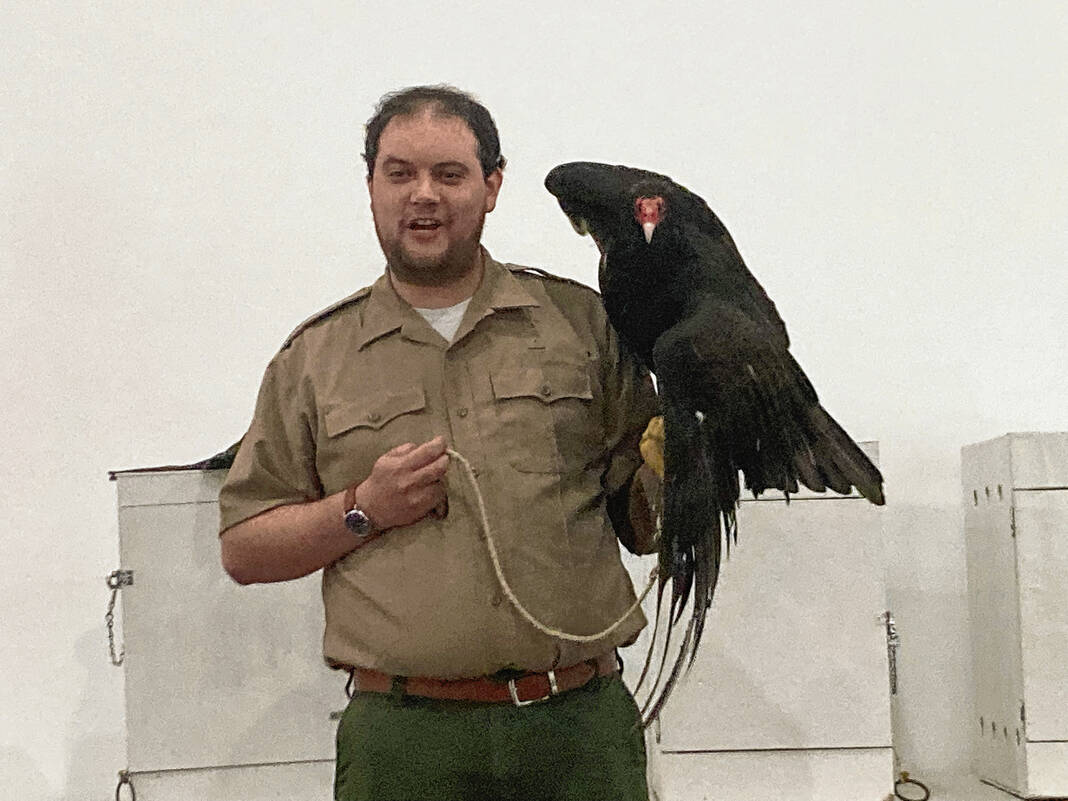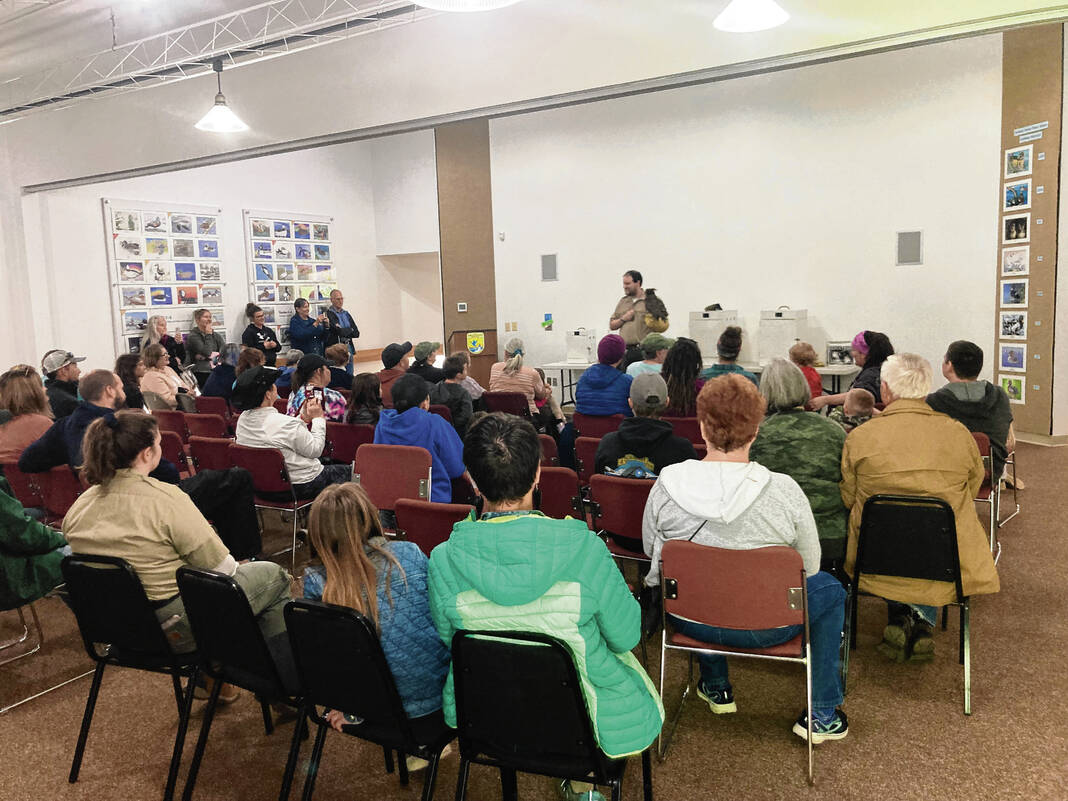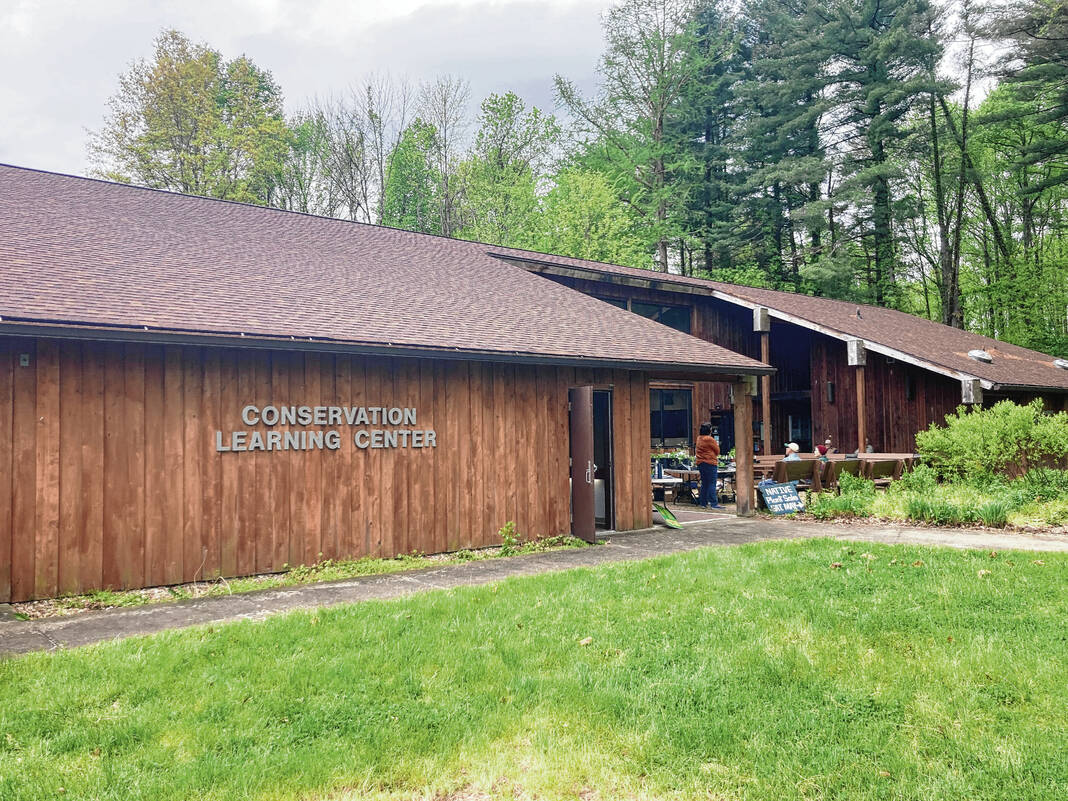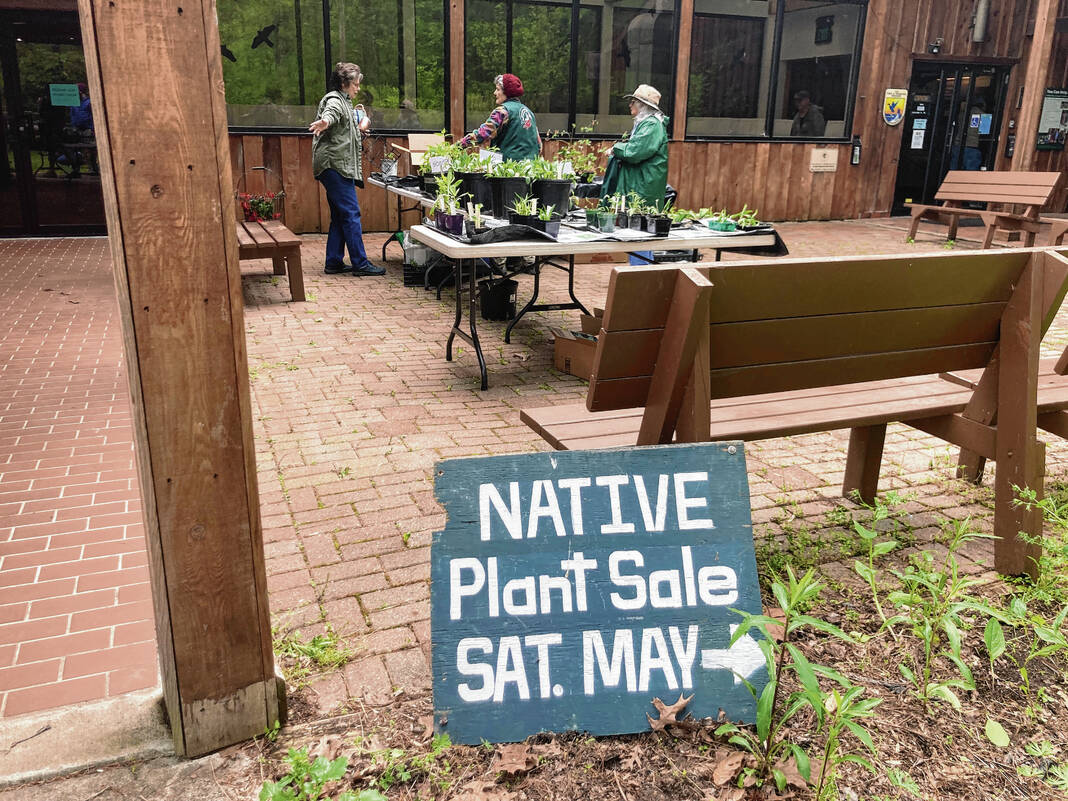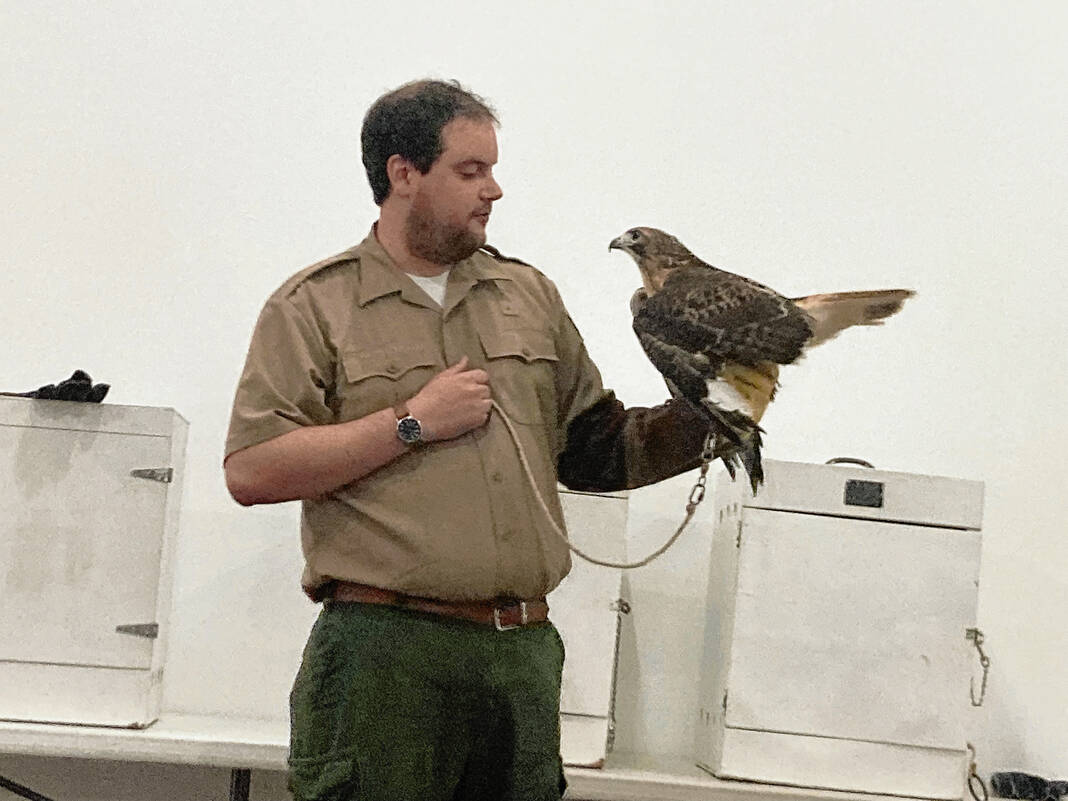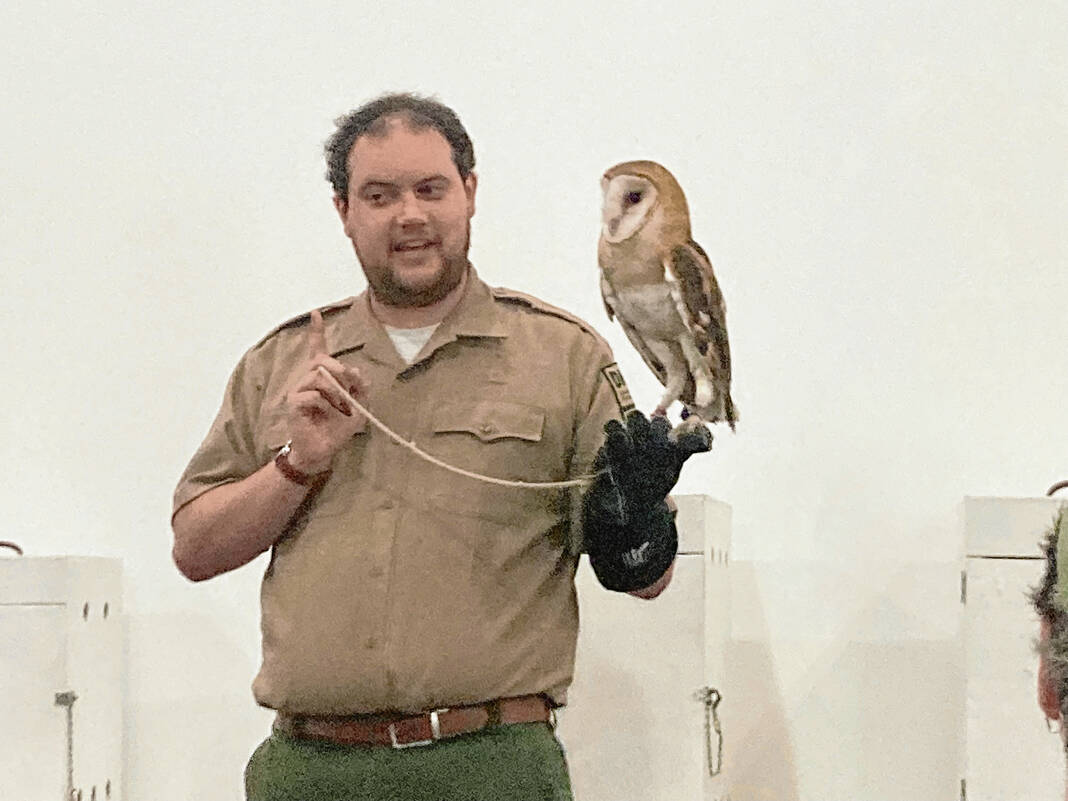Nature enthusiasts showed up to Muscatatuck National Wildlife Refuge on Saturday for a day full of activities to celebrate the reopening of the site’s visitor center.
The Welcome Back to the Wild event included two live bird programs, a cake walk, tree and bird walks, a silent auction, a plant sale and a recognition ceremony for the winners of the annual Junior Duck Stamp Contest.
Jared Everett, an interpretive naturalist for Hardy Lake State Area Recreation northeast of Austin, conducted two bird programs — one focusing on hawks and eagles and another entirely about owls.
All of the birds came from the Dwight R. Chamberlain Raptor Center at Hardy Lake, the only state-operated wildlife rehabilitation center.
Everett said each bird was being rehabilitated after being injured and can’t survive on its own in the wild.
All of the birds across both shows, with an exception of one, were raptors, which are birds of prey. That means they hunt for live food.
None of the birds had been given names to discourage people from treating them as pets.
The birds featured in the hawks and eagles program included an American kestrel, a peregrine falcon, a red-tailed hawk and a turkey vulture, even though it isn’t a raptor.
Everett handled each bird in front of each crowd of about 50 people and went over information about every species represented.
The American kestrel, Everett said, is one of the only raptors to have distinguished colors between males and females. Males have blue wings, while females have brown wings, among other differentiated physical features.
While many people think the cheetah is the fastest animal in the world, Everett said this title actually goes to the peregrine falcon. They can fly up to 240 miles per hour.
Everett said red-tailed hawks are known for having a keen sense of vision, and turkey vultures are known for having the best sense of smell on Earth.
Red-tailed hawks are able to spot a rabbit from 2 miles away, and turkey vultures can smell something within an hour of dying from a mile away.
A screech owl, a barn owl, a barred owl and a great horned owl made appearances during the owl program.
Despite being small and scruffy, Everett said screech owls are infamous for scaring campers in Indiana with a loud “woo” sound they make. They’re also able to corner and kill animals that are larger than them.
To no surprise, barn owls are named after where they like to live, Everett said. They also help farmers by catching and eating mice and can kill and eat up to 10 mice in one night.
Barred owls are seafood connoisseurs and can put their wings up and wade into water to eat crawfish. If they eat enough, Everett said their feathers can turn pink, which is same reason why flamingos have pink feathers.
Great horned owls are the largest owl that stays in Indiana all year long, Everett said, and are named for the two tufts on their head.
Jaden Trimpe, 5, attended the owl program with his grandfather, Phil Trimpe, father, Brad Trimpe and brother, Jon Trimpe, 2. He said his favorite bird was the great horned owl because there is one living near his house.
Trimpe’s grandfather said he’s glad the visitor center is reopened because his family goes to the refuge all of the time. He said his grandchildren are animal lovers, and they had a great day Saturday.
Susan Miller, a volunteer and one of the refuge’s board members, said a decent crowd came out for the first time welcoming everyone back.
“I’m just anxious to see people back,” she said.
Miller said she is excited for the programs planned for this summer, like bee pollinators visiting the refuge, and for the bookstore to be open.
Volunteer Jean Nichter also was excited that the visitor center reopened after it closed to the public early in the COVID-19 pandemic that started in March 2020.
“I was really happy that we had an opportunity to reopen,” she said. “It has been a long time. Nature is a good way to get back in the swing of things.”

